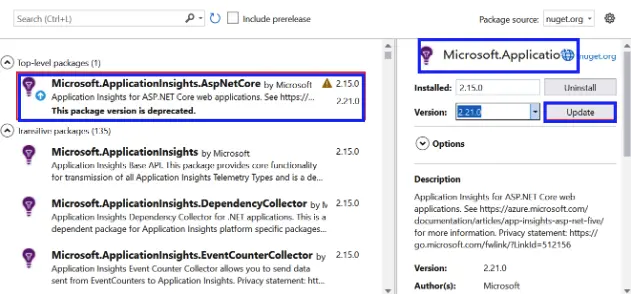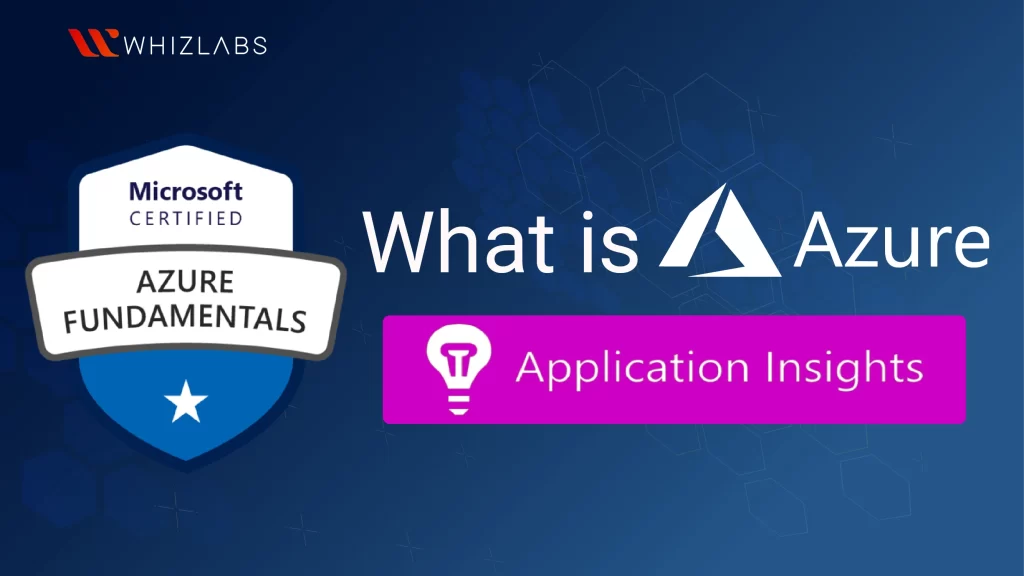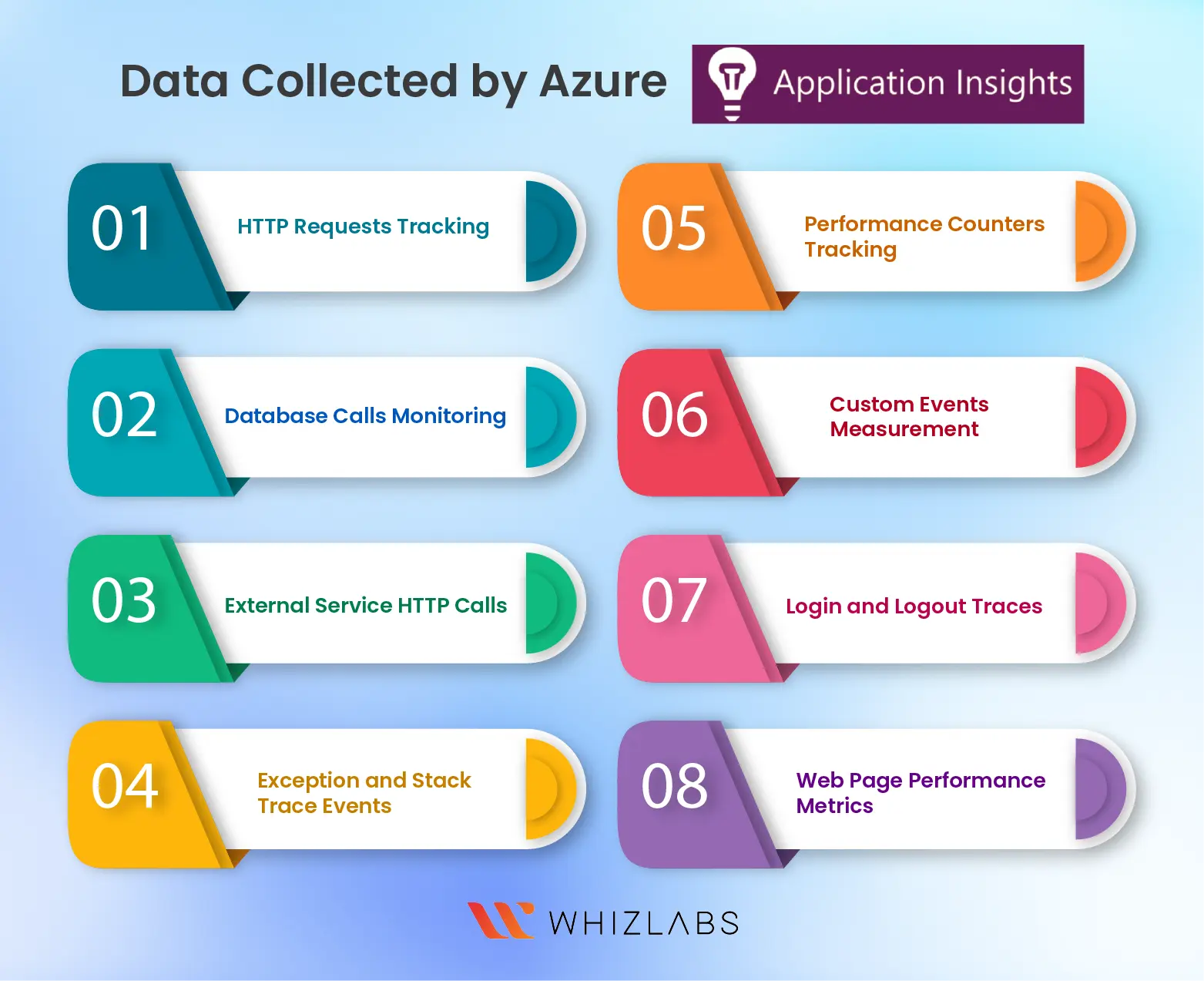Understanding the real-time insights of your live web applications is crucial for ensuring a positive customer experience. In today’s fast-paced development environment, frequent updates and deployments are common, but sometimes they can lead to performance or functionality issues.
It’s essential to detect and address these issues proactively, ideally as soon as they arise, to prevent any negative impact on your users. Azure Application Insights provides a straightforward solution for achieving this level of proactive monitoring and issue resolution for all your web applications and services.
In this blog post, we will provide you with a comprehensive overview of Application Insights and its fundamental features. Additionally, we will explore how we can effectively monitor real-world issues within our web applications. Becoming a pro in Azure application management also helps to clear up the AZ-900 Certification with flying colors.
Let’s dive in!
What is Azure Application Insights?
Azure Application Insights serves as an Application Performance Management (APM) service designed mainly for web developers to achieve compatibility across diverse platforms. Its primary role revolves around monitoring active web applications to spot any deviations in performance.
With its capabilities and features, Application Insights carries out data analysis tools that play a crucial role in pinpointing the root causes of application issues. This facilitates a comprehensive understanding of user interactions within your app and identifies areas for enhancement that pave for improved performance and user experience enhancement.
Furthermore, it extends its reach to various platforms, spanning the spectrum from on-premises and off-premises to cloud environments. And it seamlessly integrates with your internal DevOps procedures to solidify its position as an invaluable asset in the development lifecycle.
Also Read: Free AZ-900 Exam Questions on Microsoft Azure AZ-900 Certification
How do Application Insights Work?
You can enhance your application’s monitoring capabilities by installing a small instrumentation package (SDK) or modifying the Application Insights setup when applicable. This instrumentation actively tracks your application’s behavior and transmits the collected data to an Azure Application Insights Resource using a unique GUID known as an Instrumentation Key.
This instrumentation is not limited to just web service applications; it can also cover background processes and the JavaScript running within your websites. Importantly, your application doesn’t need to be hosted exclusively in Azure; it can run anywhere.
Know More: Overview of ARM Template: Azure Resource Manager Template
Furthermore, you have the flexibility to gather metrics from various sources within the host environments, such as performance counters, Azure diagnostics, or Docker logs. You can even establish web tests that periodically send simulated requests to your web service for testing purposes.
All these streams of data are consolidated and made available through Azure Monitor. In the Azure portal, you have access to robust analytical and search tools to effectively analyze and explore this raw data.
Use cases of Azure Application Insights
Some of the use cases of Azure Application insights may include:
- Efficiently identify and troubleshoot exceptions and issues affecting your application’s performance.
- Leverage powerful query capabilities to elevate your application’s performance and functionality.
- Spot emerging trends in how your application behaves, discern usage patterns, and swiftly address critical inquiries concerning your website’s performance.
- Effortlessly oversee Azure websites, container-hosted applications, on-premises setups, and those hosted by alternative cloud providers.
- Seamlessly integrate with your DevOps pipeline using tools like Visual Studio Team Services (VSTS), GitHub, and webhooks.
- Initiate monitoring directly from within Visual Studio or monitor existing applications without the need for redeployment.
What is Azure Monitor?
Azure Monitor tool helps to collect and analyze the data about the Azure resources and infrastructure on which these resources are running. It means you can be able to store and analyze the data about the various resources.
The metrics and logs are aggregated by the Azure resources and modified into alerts, troubleshooting problems, and converted into dashboards to get high visibility of Azure and methods used to defend those issues.
The capabilities of the Azure monitor include it has highly interactive query language, and ML abilities and can be integrated with tools such as DevOps, security information, etc.
Know More: What is Azure Monitoring?
Need of Monitoring
In any of the application, the need for monitoring impact the performance of the application. However, relying on monitoring solutions can generate effective results in the end. To do this, we have to analyze the architectures such as microservices around various applications and want to collaborate on the observations in the lifecycle development of applications ranging from development to release.
By this method, we can find problems and achieve performance optimization in the pre and post-development in an instant way. This will occur in the DevOps method.
What do Application Insights Monitor?
Application Insights enables you to understand your app’s performance and usage by collecting the following data:
- Identify popular pages, user locations, and peak usage times
- Evaluate the efficiency of request-response processes
- Monitor external services and servers that could slow down operations
- Analyze data statistics, pinpoint specific instances, and gather process information
- Track page views and app loading performance
- Monitor conversion rates, response times, click rates, downloads, and AJAX call failures
- Obtain insights into user logins and session durations
- Investigate Azure Docker-hosted web host performance
- Access diagnostic event logs from your application
- Create custom events and metrics for tracking business-specific events
Also Read about Guiding Principles of Zero Trust Architecture
How does Azure Monitor work?
Azure Monitor collects data from the sources such as Azure resources, applications, and OS. The collected data wholly depends on the resource type and it can be log data, metric data, or both and it can be used for visualization, analysis, automation, and alerts.
| Data collected | Description |
| Monitored data | Azure Monitor metrics capture the traits of a resource during specific periods. Metrics are essentially numbers that describe attributes such as CPU consumption, memory utilization, network traffic, and more. These values are real-time measurements, taken at intervals and stored systematically. Analysis can be performed using tools like the Metrics Explorer. Given their storage in a time-series database, metrics are particularly well-suited for visualization as graphs, offering insights into how these traits evolve. |
| Metrics | Azure Monitor metrics capture the time-dependent characteristics of a resource. These are numerical values that represent various aspects of the resource’s behavior over specific time intervals. Metrics are well-suited for properties like CPU utilization, memory consumption, network traffic, and more.
They provide real-time measurements that are stored at regular intervals, making them suitable for analysis using tools like the Metrics Explorer. These metrics can be effectively visualized as graphs since they are stored in a time-series database. |
| Logs | Azure Monitor’s logs comprise various types of data, including events, performance metrics, traces, and contextual information linked to particular applications or resources. These logs can take structured forms, adhering to predefined formats, or they can be unstructured, containing text more flexibly.
Stored by Azure Monitor, these logs are accessible through the connected Log Analytics workspace. This workspace provides a powerful query language for comprehensive log data analysis. Logs play a crucial role in comprehending detailed application behavior, pinpointing problems, and obtaining operational insights. |
How to install Azure Application Insights?
Follow these steps to install Azure Application Insights:
- Ensure that your system hosts Visual Studio 3 or a more recent version, along with an active Microsoft subscription.
- In your App’s Solution Explorer, initiate the process by Right-Clicking and selecting either “Add > Application Insights Telemetry…” or “Configure Application Insights.”

- Opt for your Microsoft account subscription, specify Azure resources, and proceed with Azure Application Insights registration.
- Initiate the application by running it using F5 and begin observing your application’s telemetry.
- Establish a dedicated dashboard for your monitoring team, providing them with a centralized platform to oversee all telemetry performances via Application Insights.
Data collected by Azure Application insights on web applications:
- HTTP Requests Tracking
- Database Calls Monitoring
- External Service HTTP Calls
- Exception and Stack Trace Events
- Performance Counters Tracking
- Custom Events Measurement
- Login and Logout Traces
- Web Page Performance Metrics
Also Read : Overview of Azure Blueprints | AZ-900 Certification
Conclusion
Hope this azure application insights blog wraps up Azure application insights in detail and how to monitor web applications in a concise way. It further adds, a detailed overview of how to install Azure application insights, use cases of Azure application insights, and so on.
In this way, you can level up your application performance by effective monitoring with the usage of Azure application insights.
It has been found that Azure Application Insights is a valuable tool for developers and IT professionals preparing for the Microsoft Azure AZ-900 certification exam. To know more about Azure applications insights and its concept, you can just get through Azure hands-on labs and sandboxes.
If you are preparing for AZ-900 Certification, go through our valuable preparation materials like AZ-900 Study guides, AZ-900 Practice tests, and so on. It is important that we do not offer any AZ-900 dumps at any cost.
- AWS Security Specialists: Essential in Modern Cybersecurity - August 16, 2024
- Cloud Developer Tools Showdown: AWS vs Azure vs GCP - August 14, 2024
- Master AWS Lambda and API Gateway for Application Development - August 6, 2024
- Benefits of AWS Developer Associate Certification which Can Boost Your Career - July 24, 2024
- Preparation Guide on Datadog Fundamentals Certification - July 17, 2024
- What is DLP in Power Automate? - June 5, 2024
- Top Data Engineering Certifications in 2024 - May 30, 2024
- How Difficult is Google Cloud DevOps Engineer Certification? - May 29, 2024


